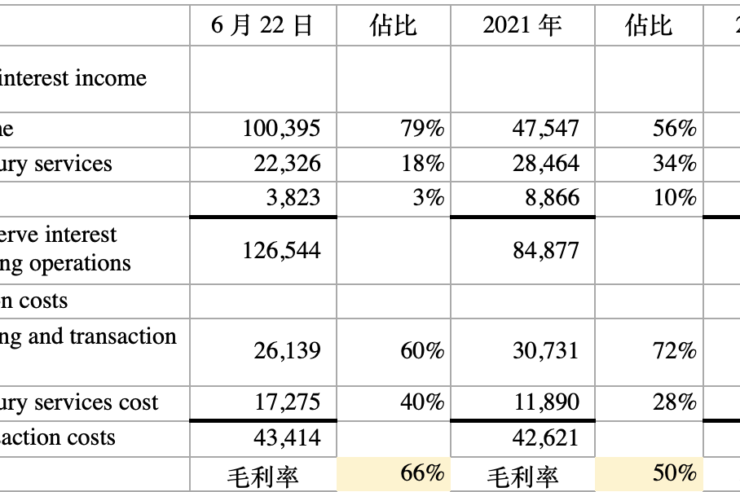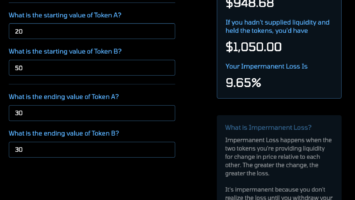Stablecoin issuers have huge cash reserves and do not need to pay interest to customers. It sounds like a good business that can make easy money. The total market value of the top three stablecoins is 130 billion US dollars, accounting for about 15% of the total market value of the entire crypto market and the transaction amount accounts for about 90% of the overall crypto market. The stablecoin issuers have always been low-key. They do not need to publish financial reports and even the proof of relevant reserves behind it were often the biggest mystery in the past. Circle submitted Form S-4 to the sec in November (S-4 form is the one that is submitted to the SEC related to business mergers or exchange offers). With this report, we finally have the chance to dive into its financials and operating model from this 813-page report.
The rise of Circle
Stablecoin is a type of cryptocurrency that maintains the stability of its value by anchoring itself to a fiat currency through the support of collateral assets or reserves. At present, the top three stablecoins – usdt, usdc, and BUSD in the market account for about 15% of the total market value of the entire crypto market. They often represent bridges between traditional finance and the crypto world.
USDC is currently the second-largest stablecoin by market value. USDC is issued with 100% US dollar reserves. It is managed by the Center Consortium, which formed an alliance between Circle and the crypto exchange coinbase in 2018. The current market value in circulation is about 42.7 billion U.S. dollars.
Circle has always emphasized its compliance and transparency. It publishes its USDC reserve status on the website every week. It also entrusts accounting firm Grant Thornton to provide monthly reserve certificates according to the verification standards established by the American Institute of Certified Public Accountants (AICPA). It seems like the most relevant and transparent stablecoin issuer. But is stablecoin really a profitable business? I was shocked after reading its S-4 form report. Their cumulative losses in the first half of this year were 850 million U.S. dollars. It also lost 500 million in the bull market of 2021. Are stablecoins really good business? Let's dive into Circle's business model from its financial statements!
How does Circle make money?
Following is Circle's two main revenue from
- Reserve interest income: Circle's huge USDC reserves are the main source of its income, accounting for 79% of total revenue in the first half of this year. However, because USDC is issued in cooperation with Coinbase, the interest income needs to be split with Coinbase. Circle invests 80% of its reserves in short-term U.S. treasury bills. In November, it began to cooperate with asset management group BlackRock to manage its reserves professionally in the form of a money market fund.
- Transaction and treasury service: In addition to paying monthly fees, Circle also charges its customers for each transaction and transfer. This is the second largest source of income for Circle, which accounted for 18% of total revenue.
Operating cost analysis
Operating costs include reserve interest income to be distributed to Coinbase, as well as transaction-related fees. Operating income minus operating costs as a percentage of revenue is the so-called gross margin. From 2020 to the first half of 2022, Circle's gross margin was between 50% and 77%. This part of their costs is mostly fixed and cannot be reduced, so we will look at the operating expenses that cause large losses next.
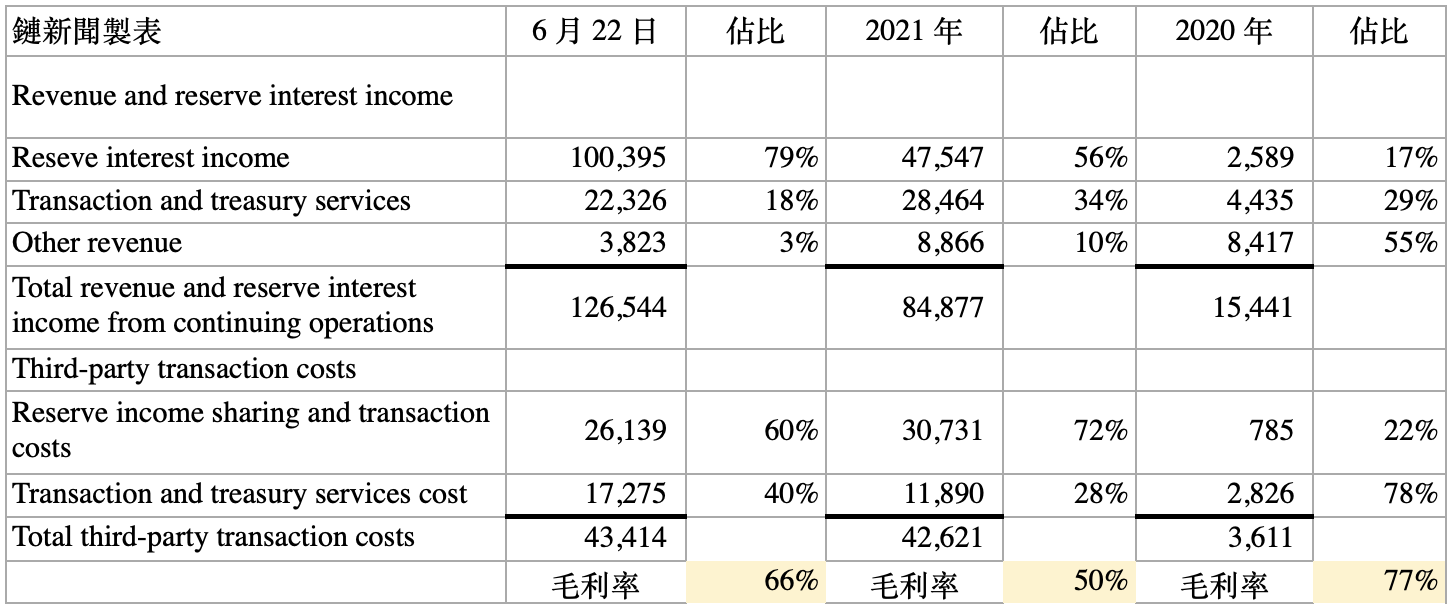
Operating Expense Analysis
- Compensation expenses: Accounts for 40% of operating expenses. Salary, stock-based compensation and large-scale expansion in 2022 have driven up staff expenses.
- General and administrative expenses: Are incurred to support business operations, accounting for 17% of operating expenses. The increase in expenses in 2022 mainly comes from legal consulting expenses.
- marketing and advertising expense: Accounts for 13% of operating expenses.
- Digital assets impairment: Refers to impairment expenses on digital assets held as collateral related to Circle Yield, and accounts for 26% of operating expenses. However, Circle stated in the report that this collateral will eventually be returned to the borrower, but its potential impairment charges, gains and losses from the return of Bitcoin collateral and changes in the fair value of derivatives may affect its financial reports. This number is only on the books, not a real loss.
We use the cost to income ratio to analyze the expense. In the first half of this year, Circle's cost to income ratio was 258%, which is completely out of control (100% is the break-even line). Whether it can reduce operating expenses in the future will be the key to Circle's profitability.
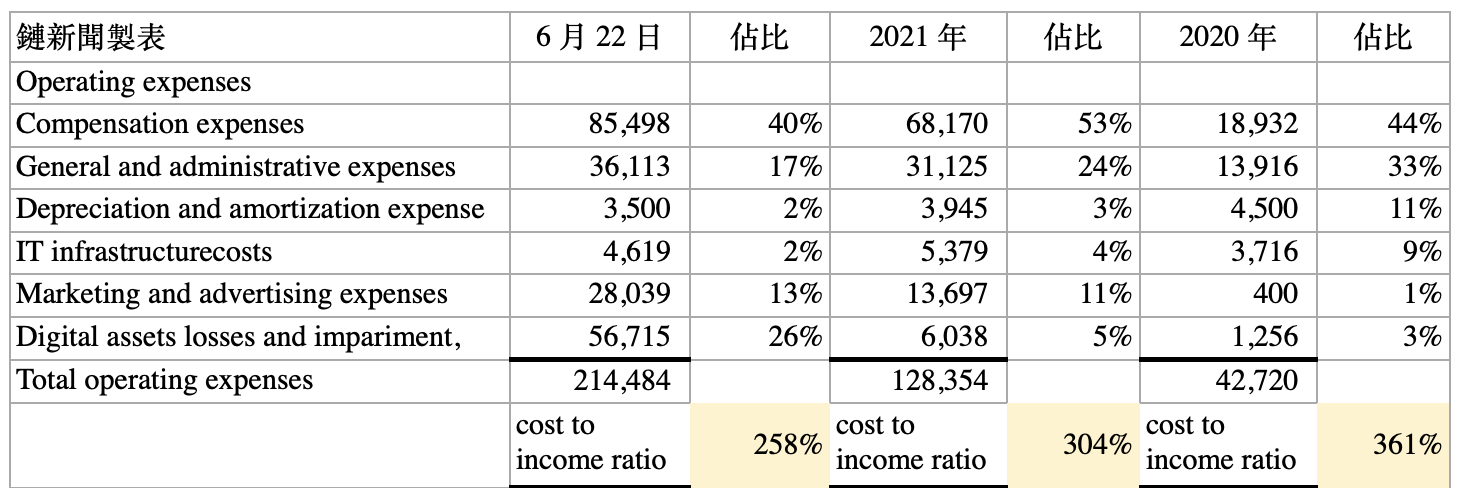
How does Circle Yield work?
Circle Yield is a project launched by Circle in the second quarter of 2021. Customers can lend their USDC to Circle and receive a fixed rate of return. Then Circle goes to other CeFi lending markets to obtain the interest. The rate of return will be determined by market circumstances and in this case, Circle is taking the market risk. It is not guaranteed to make profit between them. As Genesis stopped the redemption of loan products, Circle also revealed that the amount related to Genesis was 2.6 million US dollars, which has been fully returned to customers by Circle. Circle is no longer accepting new transactions for this project. But we can see the volume of total lending balance from the statement at the end of June that is 200 million US dollars. Has it been fully settled in just a few months? Or does Circle have related products elsewhere?
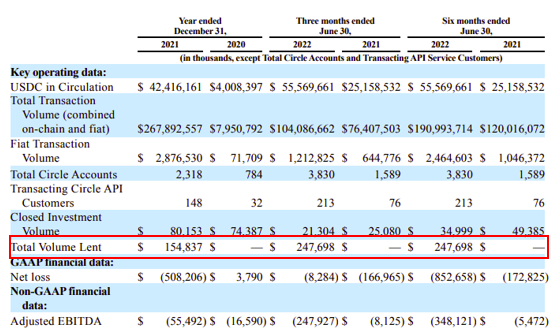
Circle's outlook
Looking through Circle's disclosure of financial reports starting from 2020, most of the time it suffers losses. Except 2020, when it recognized the gain from operations of discontinued business of US$20 million from the sale of Poloniex when it finally broke even. The subsequent losses were even more serious after that. how to increase income sources and cut expenses will be an important task for Circle to become truly profitable.
According to the financial report, Circle's reserve interest in the first half of this year was 100 million. Based on the USDC circulation of 55 billion at the end of June, the annualized return rate is only 0.36% and part of it will be allocated to Coinbase. However, as the Federal Reserve raises interest rates aggressively this year, one-month U.S. treasury bill yields have reached over 3.8%. (Circle recently revealed that the average duration of its treasury bills is 27.8 days) More subsequent interest income is expected to be received in the future.
Although reserve interest income takes most of Circle's revenue, the level of interest is affected by macroeconomics and is beyond Circle's control. From the bank's point of view, Circle has absorbed a large amount of deposits, but it can only rely on investments in the safest U.S. treasury bills. If the interest rate difference cannot be locked into the lending model, what Circle should do is to increase fee income. Circle also mentioned in the report that it has partnerships with Visa, the international fast remittance company MoneyGram International, and Signature Bank. Only by expanding the market share of Circle's stablecoins and enhancing the connection between existing payment channels and digital asset payments and settlements will there be an opportunity to further increase the number of customers and transaction volume.
The reduction of operating expenses is also a direction that Circle should work toward including personnel, management and marketing expenses. After all, even if the loss of 710 million convertible notes is excluded, Circle still lost 140 million in the first half of this year. It seems that increasing revenue cannot make up for this large deficit. How to operate more efficiently will determine whether Circle can turn losses into profits in the future.
Circle recently announced that it will temporarily abandon its listing plan. In addition to the poor market conditions, lack of profitability seems to be the real issue. Especially seeing that recent turmoil in the crypto markets may usher in more regulatory issues. Is stablecoin really a good business? I'm afraid only time will tell.
本文轉自網路,如有侵權請來信告知,本網站不代表任何投資建議,僅提供資訊,若用戶有任何投資相關行為皆與本站無關
本網站所載的任何資訊均不構成投資建議,投資有賺有賠,投資人應獨立判斷,審慎投資,自負風險
